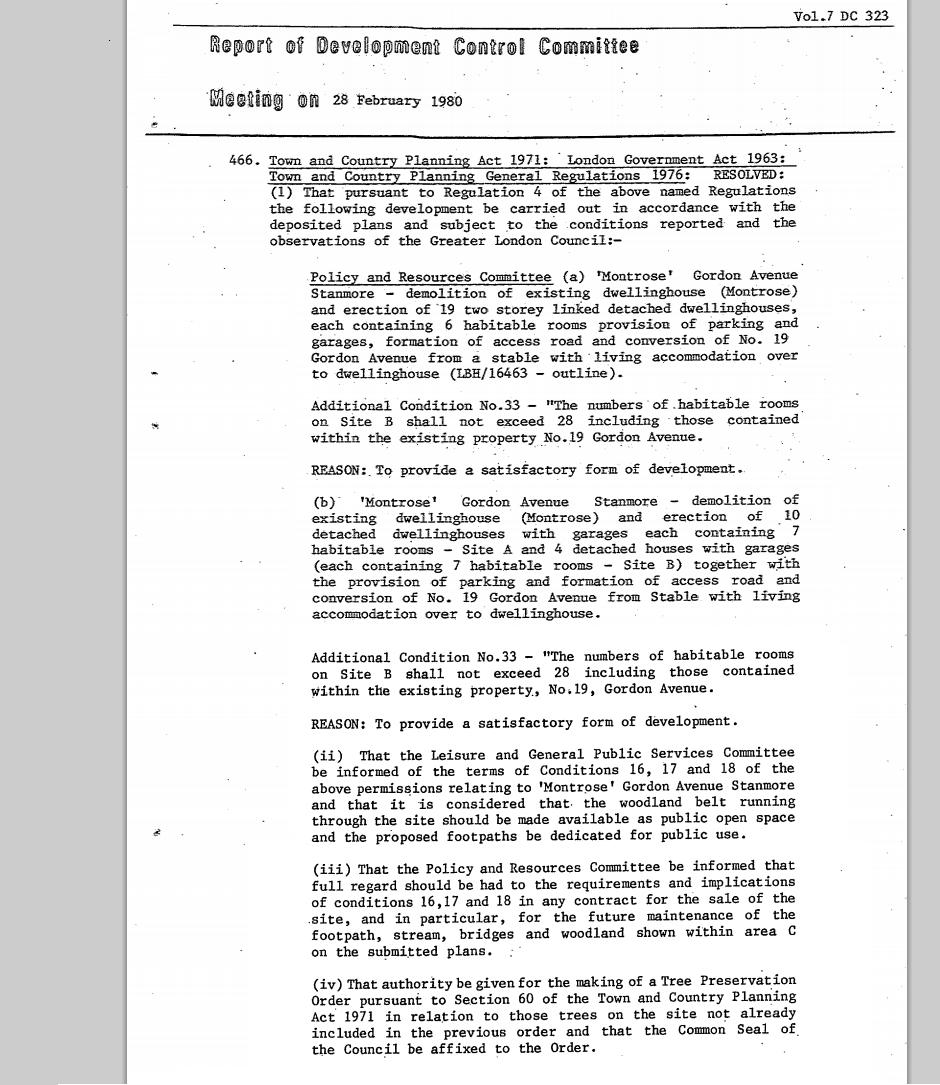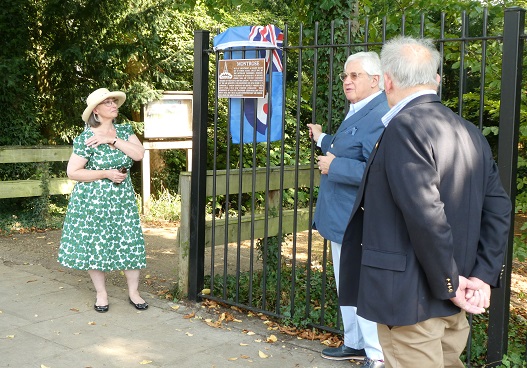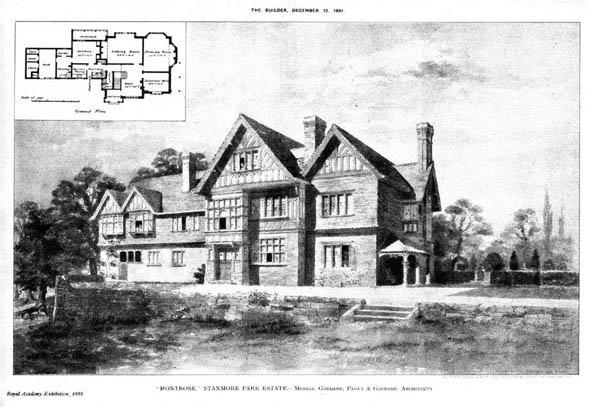Illustration of Montrose House, Gordon Avenue, Stanmore
The story of Stanmore’s Montrose walk starts with a Victorian House called Montrose, that was built near Stanmore Golf course on the Stanmore park estate in Gordon Avenue around 1890. In the 1890’s this leafy Avenue was a track running from Kenton Lane in the East, across the estate to Stanmore Village in the West. When the world’s greatest Hotelier Frederick Gordon came to Stanmore, he opened his railway terminus which was located at the western end, he laid out ’Gordon Avenue’ named after himself of course, with sumptuous properties fit for the well to do to come and live in the peace and quiet of the countryside. Montrose was one of the first properties to be commissioned and was built to a style typical of the period by a firm of Architects from Leicester named Goddard, Paget and Goddard.
In 1919 the house was bought by Major Sir Benn Jack Brunel Cohen. During the First World War Cohen was sent to France fighting with King’s Liverpool Regiment, he was promoted to Major in June 1917, but was wounded at the Third Battle of Ypres, and both legs were amputated above the knee. For most of his life after this he used an electric wheelchair, and became a prolific campaigner for disabled causes. He became a Conservative MP for Fairfield in Liverpool for thirteen years. It was during his time living in Stanmore that Cohen was involved in the discussions which led to the founding of the British Legion in 1921. He initially served the Legion as its honorary treasurer from 1921 to 1930, then as vice-chairman from 1930 to 1932, and again as honorary treasurer until 1946. He later served on the board of the Poppy Factory in Richmond, where the remembrance poppies were, and are still made.
In 1927 the propery was bought by the Air Ministry as a residency for R.A.F. top brass working at the nearby Stanmore bases, Stanmore Park and Bentley Priory. Therefore it ultimately became home to Air Chief Marshall Hugh Dowding, later To become Lord Dowding who lived there with His sister Hilda.
Every morning Lord Dowding or "Stuffy" as he was known to his men, because of his reserved and uncharismatic manner would walk a mile and a half from his house, across the grounds of Bentley Priory to his office at the RAF’s control room, where he worked.
Lord Dowding’s tactics orchestrated from Stanmore’s Bentley Priory proved to be the right ones and he was, indeed, most responsible for Britain’s “finest hour.”

During the early eighty’s a lot of local M.O.D. properties were sold to off to developers and Montrose was one of them. Planning permission was granted by Harrow Council at a meeting on the 28 February 1980, To build a development called the Water Gardens. It was also decided that a small woodland belt running through the site be made available to the public.
Montrose Walk as it is now called is a small .45 hectare woodland trail following the Stanburn Stream from Gordon Avenue to Wolverton Road The stream is an out-flow from temple pond which in turn was filled with water flowing down in a south easterly direction through Stanmore from Summerhouse Lake in Bentley Priory nature reserve.
As you enter the pathway from the Northern end you will notice to your right a tunnel that brings the water under Gordon Avenue. This path then follows in a south westerly direction beside the stream, half way down the walk there is a footbridge that crosses over to the other side.
At the Wolverton Road end of the walk is an Environment Agency monitoring station which keeps track of the water level to guard against flooding. Typical Height would be between 0.05m and 0.60m, the highest level ever recorded here was 1.35m.

The former house was awarded a brown Harrow Heritage plaque that was unveiled at a special social distanced event. In recognition of the houses most distinguished resident, it was decided to unveil the plaque on Battle of Britain day 15th September 2020. The plaque was mounted on the railings and can be seen at the Gordon Avenue entrance to Montrose walk.
The full text reads: Site of Montrose a grand house set in three acres. Built in 1891 by the Hotelier Frederick Gordon. 1919, home of Major Sir J. B. Brunel Cohen KBE MP, 1919 – 1931; founder member of the Royal British Legion. 1927 purchased by the Air Ministry. 1940, residence of ACM Hugh C. T. Dowding, first Baron Dowding of Bentley Priory GCB GCVO CMG C-in-C RAF Fighter Command. 1944, residence ACM Sir Trafford Leigh-Mallory KCB DSO and bar Air C-in-C Allied Expeditionary Air Force. 1981 sold for redevelopment.
Trees along the route include Norway maple, Holly, Yews, Oaks, Beeches, Scots Pine, Horse Chestnuts and Sycamore.
Just near to the entrance are a couple of benches to rest on, and enjoy the tranquility of the bird calls and the babbling brook.
